Irmgard Emmelhainz | Between Objective Engagement and Engaged Cinema: Jean-Luc Godard’s “Militant Filmmaking” (1967–1974)
It is often argued that between 1967 and 1974 Godard operated under a misguided assessment of the effervescence of the social and political situation and produced the equivalent of “terrorism” in filmmaking. He did this, as the argument goes, by both subverting the formal operations of narrative film and by being biased toward an ideological political engagement.1 Here, I explore the idea that Godard’s films of this period are more than partisan political statements or anti-narrative formal experimentations. The filmmaker’s response to the intense political climate that reigned during what he would retrospectively call his “leftist trip” years was based on a filmic-theoretical praxis in a Marxist-Leninist vein. Through this praxis, Godard explored the role of art and artists and their relationship to empirical reality. He examined these in three arenas: politics, aesthetics, and semiotics. His work between 1967 and 1974 includes the production of collective work with the Dziga Vertov Group (DVG) until its dissolution in 1972, and culminates in his collaboration with Anne-Marie Miéville under the framework of Sonimage, a new production company founded in 1973 as a project of “journalism of the audiovisual.”
Godard’s leftist trip period can be bracketed by two references he made to other politically engaged artists. In Camera Eye, his contribution to the collectively-made film Loin du Vietnam of 1967, Godard refers to André Breton. Then in Ici et ailleurs(Here and Elsewhere), a film Godard made with Anne-Marie Miéville in 1970–74, he cites Picasso’s Guernica (1937). These references help explicate Godard’s leftist trip years. In the former, Godard (mis)attributes to Breton a position aligned with the French Communist Party and their instrumentalization of art in the name of a political cause—what we will call “objective denunciation.” In the latter, by citing Guernica Godard enters into a dialogue with Jean-Paul Sartre and his theories on political engagement and aesthetic autonomy, especially his debate with Adorno about the effectiveness of images versus words in transmitting political messages. Oscillating between these two positions, Godard carved out his own form of objective denunciation in opposition to Sartre’s schizophrenic split between two activities that he considered to be incommensurable: “artistic enunciation” and “active political engagement.” Godard synthesized these activities, exploring and embracing the contradictions between the roles of “filmmaker” and “militant.” We must bear in mind, however, that Godard’s revolutionary constellation cannot be reduced to these literary references. Indeed, in La Chinoise (1966) Godard established the genealogy of his politicized aesthetics—one that departed from traditional European intellectual history—by classifying literary authors, philosophers, and artists as either “reactionary” or “revolutionary.” In general, between 1967 and 1974 Godard developed a revolutionary imaginary in which Dziga Vertov and Bertolt Brecht were pioneers, Breton was a deviation, Guy Debord’s Society of the Spectacle was a shared paradigm, Sartre was his bête noire, and philosophers such as Michel Foucault, Julia Kristeva, and Gilles Deleuze were his compagnons de route (fellow travelers).
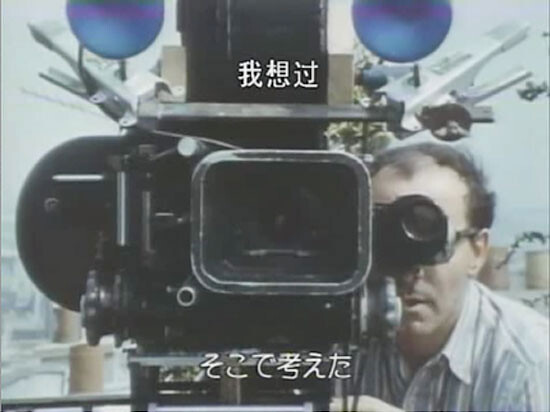
Figures like Breton and Sartre are inseparable from the history and tradition of the French avant-garde, which I consider here in light of the relationship between French intellectuals and the French Communist Party (PCF). Modeled after Lenin’s vanguard party, the PCF bestowed a pivotal role on intellectuals between the end of World War II and 1965: the production and transmission of political knowledge to the proletariat. As described in What Is To Be Done?, Lenin’s Party functioned as the vanguard of the proletariat, a highly centralized body organized around a core of experienced intellectuals designated as “professional revolutionaries” who were charged with leading the social democratic revolution.2This ideological avant-garde operated in the realm of opinion and leftist common sense, putting art in the service of political causes and taking for granted the artist’s position as the porte parole of humanity. Such an avant-garde posits a transitive relationship between art and politics—that is, a causal relationship between the two, even the instrumentalization of art in the name of leftist political ideology.
Committed French avant-garde artists, intellectuals, and writers were obliged to take a position regarding the PCF and its dogmatic socialist-realist aesthetic.3 For example, Althusser and Aragon were members of the party, Breton was a dissident, and Sartre was a distant “fellow traveler” and the “party’s consciousness.” Breton claimed to be a communist but distinguished his own artistic practice from the PCF’s socialist realism; he lamented the party’s “bad taste” and averred that the “leftist political milieus do not know how to appreciate art outside of art made with consecrated and expired forms.”4 The heyday of the PCF as a point of reference for intellectuals coincided with the highpoint of Structuralism, when political discourse and the ethics of the intellectual were shaped by Marxism, psychoanalysis, and linguistics. At that time, “the signifier” (the author, the phallus, the father) was treated with the greatest respect, as were intellectuals, who were regarded as public figures speaking truths.5 In the Sixties, however, the signifier, the phallus, and the father were contested as figures of authority and truth. Likewise, intellectuals and their status as the consciousness of the party and society were challenged. As Frederic Jameson has argued, this was an unprecedented situation in which it became possible for radical intellectuals to imagine revolutionary work outside and independent of the PCF.6
Enter Maoism. To subscribe to Maoism was a way of taking a position against the Communist Party in accord with the Sino-Soviet split and to disconnect from the “dark” outcome of the Cultural Revolution. In line with the attempt to break away from the model of the vanguardist intellectual, the Maoists “established” themselves in factories; they worked alongside the workers and rejected the exteriority of discourse in favor of the interiority of practice, believing in the creative potential of the proletariat. By rejecting theory in favor of practice and giving preference to direct intervention (without mediation), Maoism embraced the mythical junction of students and workers and declared war against the despotic regime of the signifier, the figure from above who speaks truths. Around May ’68, rejecting the idea that “knowledge is power,” Maoists launched an attack on vanguardist politics by posing the following questions: Who speaks and acts, from where, for whom, and how? Specifically, these interrogations were addressed to union delegates, intellectuals, professors, writers, and artists, as Maoists questioned the representativity of engaged intellectuals and delegates. Maoists challenged their legitimacy as disinterested agents who could speak critically on behalf of the proletariat and lead the Revolution. Walter Benjamin’s critique of Lenin’s professional intellectual was influential in the French Sixties. For Benjamin, the problem with professional intellectuals is that when they attempt to integrate themselves into the proletariat, they ignore their own position in the process of production. Benjamin calls this the trap of logocracy, a system that implies the ruling power of words.7 In order to avoid this trap, Maoists prioritized practice (working alongside workers) and denigrated discourse, focusing their energies on liberating the forms and instruments of production (to achieve self-management) and promoting self-representation.
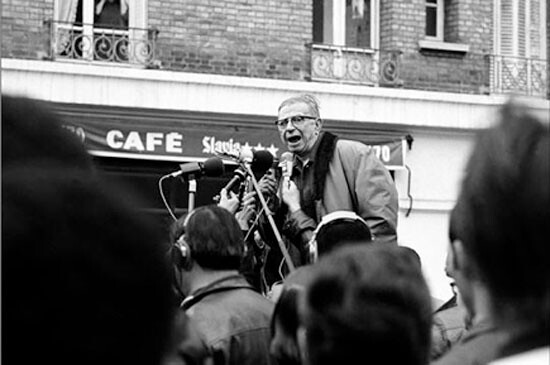
In accord with Maoist theory and practice, the logic under which Godard’s work operated during this period was not that of the old ideological avant-garde but that of the war of position, a strategic rather than an ideological approach. Godard’s avant-garde was nominal insofar as it transformed proper names, cries, battles, and avant-garde positions into concepts and slogans. The filmmaker’s vanguard was further predicated upon a relationship to art of the past that differed from the traditional vanguardist negativity; instead of treating it as a tabula rasa, Godard reclaimed, contradicted, and disavowed the art of the past. His strategy, therefore, consisted of repeating, testing, and incorporating different historical and contemporary avant-garde strategies through the logic f Maoist double negativity or contradiction. Maoist contradiction is a kind of nondialectical, eternal struggle of opposites which starts from a principal contradiction to which other contradictions are subordinated. Maoist contradiction is thus a self-revolutionizing logic that, instead of reaching a higher order, advances from quantitative change to qualitative change through leaps forward. Godard’s gesture of simultaneously incorporating and rejecting politicized modernism reflected the epistemological change brought on by the post-structuralist separation of the signifier from the signified. This shift brought representation into crisis and was transfigured into the theoretical and practical ideologemes of the Left: instrumentality, realism, reflexivity, didacticism, and historiography.8 Taking into account the theoretical-practical problems of these ideologemes, Godard developed a series of contradictions relating to the new historical problems that brought traditional Marxism to its limits, such as the novelty of an emergent class of university-educated consumers and the relationship between art and the explosion of mass media and information—phenomena without historical precedents.
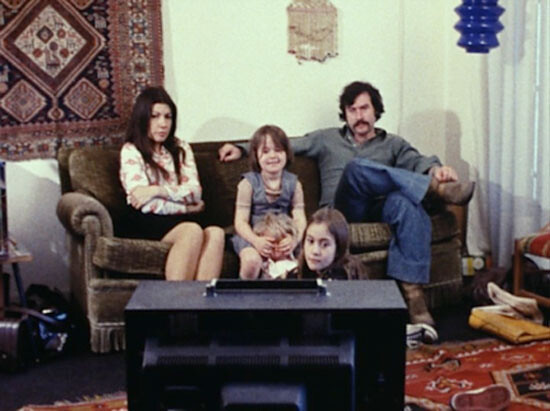
In Godard’s Camera Eye, we see an image of Godard standing behind his camera. This image is interspersed with images from life in Vietnam. In the voiceover, Godard says that these images of Vietnam are similar to those he would have filmed if the authorities had issued him a visa to visit Phnom Penh. He also states maliciously that in adopting his own engaged position of “the long revolutionary wait and of objective and declarative enunciation,” he takes after André Breton. It is malicious to attribute this attendiste position of the PCF to Breton because, as mentioned above, Breton distanced himself from the party. This position implies that the artist, while waiting for the revolution, speaks out ceaselessly for others, expressing his indignation in the name of just causes. Godard thus calls for the imperative of listening to and transmitting a scream of horror against injustice. Godard further states that he is aware that art cannot change the world but what he can do, as a filmmaker in France, is to articulate his rage and criticism as often as he can: that is why he mentioned the Vietnam War in every single one of his films until the war ended, from Vivre sa vie (1962) until Tout va bien (1972). This position is that of objective denunciation, which implies a transitive relationship between aesthetic and politics: art is put in the service of political critique, denying art’s autonomy from ethics and politics. In his manifesto Pour un art indépendant révolutionnaire (1938), Breton stated the following:
True art, which is not content to play variations on ready-made models but rather insists on expressing the inner needs of man and of mankind in its time—true art is unable not to be revolutionary, not to aspire to a complete and radical reconstruction of society. This it must do, were it only to deliver intellectual creation from the chains which bind it, and to allow all mankind to raise itself to those heights which only isolated geniuses have achieved in the past. We recognize that only the social revolution sweeps clean the path for a new culture.9
For Breton, “true art” or advanced art must be led by social revolution. Breton’s position implies a causal link between aesthetics and politics: if there is political freedom (through social revolution), then there will be aesthetic liberation. Further, true art is necessarily revolutionary. This means that any art that does not have political freedom as its basis and the emancipation of humanity as its purpose is not true art. A question thus arises: Does Godard, by adopting the same avant-garde position as Breton (his real position, not the misattributed one), likewise deny art any autonomy from politics? Such a position would imply a causal link between aesthetics and politics: if political freedom, then aesthetic liberation. By contrast, the position of objective denunciation entails that aesthetic activity be intrinsically linked to political action as the means to achieve or announce the emancipation of humanity. As we will see, Godard’s position is more complex, as it was not only in dialogue with the vanguardist tradition, but he also entered into dialogue with Jean-Paul Sartre.
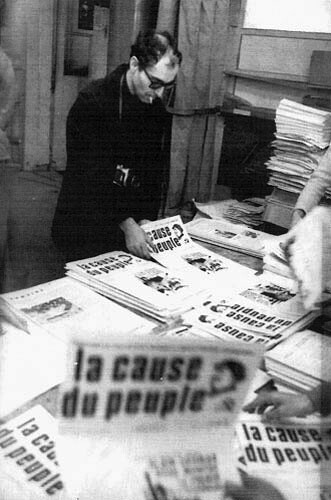
Sartre believed that artists are not obliged to follow any mandate, yet they are called to speak critically in the name of the emancipation of humanity. In this sense, objective denunciation is similar to Sartre’s model of “collective objectivity,” which calls for the exercise of one’s freedom in order to act in the name of universal values. Sartre’s position, however, implies a schizophrenic split between the “writer function” and the “intellectual function.” In Sartre’s view, a writer inhabits a fundamental contradiction. On the one hand, the artist/writer is a creator and articulates his being-in-the world through language, producing partial yet universalizing non-knowledge. The writer is also capable of producing practical knowledge, and he does so not in his own work, but by operating in “lived reality” in the name of universal truth. What is at stake here for Sartre is the “utility” of works of art and the contradictory situation in which writers live: the non-knowledge that the writer produces (knowledge that is not scientific or objective—savoir as opposed to connaissance) mainly serves the class in power and has limited use for the masses, since artworks are shaped by class interests. That is why for Sartre the writer has two functions, the intellectual function and the writer function: the intellectual is not mandated by anyone and therefore, produces practical truths in the name of the universal.10 According to Sartre the two activities were unbridgeable. Godard explained his relationship to Sartre and his engaged position in an interview in 1972.
I participated with him [Sartre] in a few actions for [the journal] La cause du peuple.11 And after, I tried to establish a dialogue with him but it was impossible. I was trying to know what was the relationship between his texts about the Russell Tribunal or about the Houillères, which were amazing texts, and his older or recent studies about Flaubert and Mallarmé. He then tells you that there are two men in him. One who continues to write about Flaubert because he doesn’t know what else to do, and another one who has thrown himself with all his soul into the struggle, by going to address the workers at the Renault factory standing on top of a barrel. We don’t deny either position. We simply think that as an intellectual radicalizing himself, he should bridge both positions.12
Thus there is “Sartre-the-writer,” who spends ten hours a day writing about Flaubert, and “Sartre-the-intellectual,” who addresses workers from the top of a barrel.13 The intellectual speaks out while the writer works subjectively with language.14 Clearly, Sartre drew a distinction between the writer and the intellectual in order to avoid a transitive relationship between aesthetics and politics. For Sartre, objective denunciation must take place separately from the field of aesthetic production, in the domain of engaged activism. Literature (and art) is thus severed from a critical function. “Freedom” in the aesthetic and in the political domain is maintained not by a transitive link, but by a separation: art is autonomous non-knowledge that is subservient to the class in power, and therefore the artist/writer is an unhappy consciousness pushed to act politically in the empirical realm. Furthermore, for Sartre a work of art or literature does not have to be measured by its “effectiveness” in the realm of politics or ethics, since artworks should not be effective in the political realm. Taking Picasso’s Guernica as an example, he famously stated, “Does anyone think that it won over a single heart to the Spanish cause?”15 Further, Sartre’s intellectual function involves a “radical overcoming” (dépassement radical) of the bourgeois writer function in order to become a “transcendental consciousness” and to bring truth to institutions that lack it (Sartre was the Party’s consciousness) and to carry philosophy to the streets (he was the proletariat’s fellow traveler).16
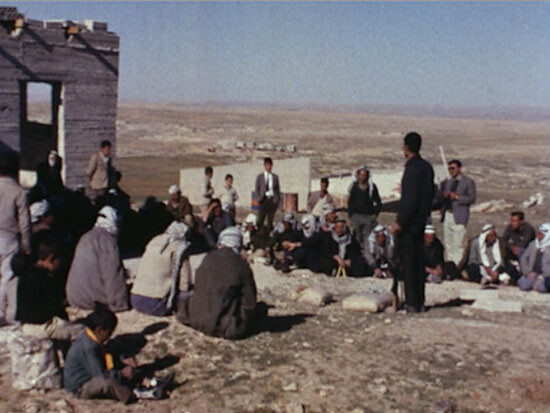
Godard grappled with Sartre’s split between engaged activism and artistic enunciation in a text from 1970 published in Manifeste, Fatah’s17 journal in France: “In literature as in art, to fight on two fronts. The political front and the artistic front—that is the current stage, and we’ll have to learn to resolve the contradictions between these two fronts.”18Adopting Breton and Sartre’s opposing avant-garde positions and holding them in suspension allowed Godard to highlight the contradictions inherent in both models of the aesthetic-political avant-garde. This mirrored his own effort to problematize both the transitive relationship between politics and aesthetics implied by objective denunciation, and the separation between the artist and the activist implied by Sartre’s belief in the autonomy of art. As we have seen, Godard claimed that Sartre did not go far enough; in his view, Sartre should have attempted to reconcile the intellectual function with the writer function. Bridging Sartre’s split between active engagement and artistic enunciation, while also going beyond the practice of objective denunciation, Godard adopted the position of “militant filmmaker.” In this manner, Godard kept his filmmaking practice somehow separate from the “intellectual” function of active engagement, yet the two positions—militant andfilmmaker—could be easily conjoined because in his Marxist-Leninist films, the relationship to the political is not clearly intransitive, as we shall see.
In his political sympathies, Godard gravitated towards the Proletarian Left Party (Gauche Prolétarienne, a Maoist party active from 1969-1973), collaborating in actions around their journal La Cause du peuple.19 Godard also wrote five articles for the Maoist journal J’accuse and helped create the newspaper Libération.20 When he founded the Dziga Vertov Group with Jean-Pierre Gorin in 1969, Godard reinvented his practice as a filmmaker. His purpose was to rethink the notion of authorship—specifically, the auteur theory advanced by Cahiers du Cinéma’s—and to position himself vis-à-vis other militant film collectives and their avant-garde agendas. The group thought of itself as a cell (like a political group or groupuscule), but in contrast to other film collectives and Maoist groupuscules that were organized around specific struggles (i.e., solidarity with female workers, with Chile or Vietnam, and so forth), DVG situated itself within the history of cinema by adopting the name of a pioneering radical filmmaker. None of their nine films are signed. Rather, members of DVG claimed authorship of them a posteriori in interviews or written documents.21]; and Silvia Harvey’s account in May ’68 and Film Culture [London: British Film Institute, 1978]]). Dissatisfied with the eclecticism reigning in the États Généraux, Godard and Gorin fled the meeting and founded the Dziga Vertov Group. According to David Faroult, Godard filmed two DVG films with Jean-Henri Roger: British Sounds and Pravda, both in 1969. In Faroult’s account, Gorin entered the picture that same year when he collaborated with Godard on the DVG manifesto and the filming of Le Vent d’est in Italy. (See Faroult, “Never More Godard,” Jean-Luc Godard Documents, 123.) Other militants who gravitated toward DVG included Gérard Martin, Nathalie Billard, and Armand Marco. According to Julia Lesage, Pravda was filmed in Prague with Jean-Henri Roger and Paul Burron. (See Julia Lesage, “Godard and Gorin’s Left Politics,” Jump Cut 23 [April 1983]].)] Godard and Gorin recognized that the Maoists had contributed greatly to revolutionary filmmaking by developing radically new aesthetic-political practices, but they felt that the Maoists hadn’t taken their confrontation with intellectuals and delegates far enough.22
Standing against the vanguardist logic that seeks to figure a future emancipatory image of the world, DVG’s movies show the political actuality; by describing their films as “materialist fictions,” DVG took a position with regard to “realist” and “materialist” politicized cinema. In general, left-wing films of the 1970s tended to film social movements live because they aimed to show the “reality” from which the members of the movements sought to emancipate themselves. This “realist” militant cinema was put at the service of good causes and addressed an activist public. It also depended on political reality; consequently, it could be said that its content (social figures in struggle) prevailed over its form. We must distinguish, however, this militant cinema (similar to socialist realism) from the materialistversion, which sought to critique socialist realism and realism by transforming them formally; materialist film practice is thus characterized by observing reflexively the discourse of the cinematographic apparatus. As a practice, materialist cinema sought to overcome socialist realism by transforming it formally. This means that it attempted to demystify the process of cinematic production and the notion of the cinematographic image as a pure or objective register of reality, seeking to produce self-knowledge based on self-criticism. In the discussions that took place during those years about materialist cinema, the notion of the “objective whole” of the materialist Weltanschaung was based on André Bazin’s realist ontology. The critique of “objectivity” in cinema was crystallized in 1969 in a debate between two key publications in France: Cahiers du Cinéma and Cinéthique, the latter devoted to realism, indexicality, and reflexivity in cinema. (Cinéthique was heavily influenced by the films of Godard and DVG.) In contrast with materialistand militant films, the Dziga Vertov Group’s materialist fictions address the viewer didactically and, in a Brechtian vein, consider him or her as an active agent in the decodification of the movie.
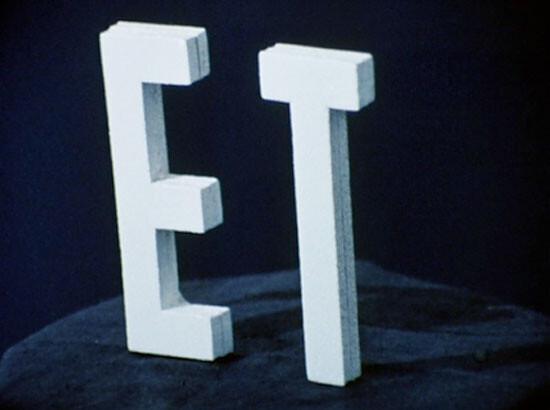
In DVG’s first written manifesto, “Premiers Sons Anglais,” which appeared in the film journal Cinéthique in 1969, they began to outline their political praxis.23 In another text entitled “Quoi Faire?,” published in the British film review Afterimagein 1970, Godard described the militant program of DVG as underscoring a distinction between political films and films conceived politically. Political films, in Godard’s view, correspond to a metaphysical conception of the world: these films describe situations—for example, the misery of the world—and are thus in accord with bourgeois ideology and operate under representational logic. By contrast, “films made politically” belong to the dialectical conception of the world, which entails doing concrete analyses of concrete situations with the purpose of showing the world in struggle in order to transform it. Instead of making images of the world that are “too whole” in the name of a relative truth, making films politically entails studying the contradictions that exist between the relations of production and productive forces and producing scientific knowledge of the revolutionary struggles and their history. This program insists on a theoretical preoccupation with the relationships between world, image, and representation.24
Thus, DVG’s battle was fought on the field of a scientific theoretical practice, contesting Sartre’s conception of art and literature as the realms of the production of non-knowledge. That is to say that DVG’s aim of uniting theory and practice shows their attempt to bring art out of Sartre’s domain of non-knowledge. It also shows their effort to account for the explosion of information and the transformation of art into information. This led them to create semiotico-visual experiments, which became the basis of the pedagogy of their “blackboard films.” In these films, they aim to fabricate images that are not “too whole” and that carry a contradiction within them. They also aim to make simple or “just images” as opposed to making “images that are just,” by articulating disjunctions between “true sounds put on top of false” images. At the same time, their practice was based on a “productivist” model, seeking to achieve autonomy in the means of production and distribution of their films. With the hope of expanding their innovations to television, Godard and Gorin sought out the technical and financial alternative of televisual production. And even though DVG’s movies—British Sounds, Pravda, Lotte in Italia, and Vladimir et Rosa—were made with television producers—London Week Television, Munich Tele-Pool, the European Center for Radio-Film-Television, and RAI, respectively—in most cases the producers refused to show the movies. Nonetheless, television became for them a place to create new relationships of production, to try out technical innovations, and to create new relationships between viewer at text; they were also able to explore television’s pedagogical potential, which until then had been repressed by institutionalized television practices. Walter Benjamin’s notion of the “Author as Producer” is obviously a key influence here, as well as in DVG’s proposal (inspired by Brecht’s epic theater) to erase the dichotomy between form and content and to reconceptualize it in terms of technique. According to Benjamin, a progressive work of art will innovate technically at the same time that it places the means of production at the disposal of the masses—which translates in Godard and Gorin to technical innovations and to the pedagogical aspects of their movies.
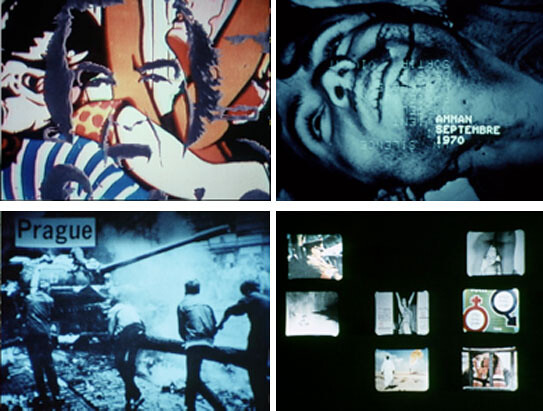
In ideological terms, DVG’s political line was Marxist-Leninism, also known as Maoism.25 In methodological terms, they applied the Maoist principle of contradiction or the “struggle of opposite tendencies” as a method in filmmaking which, as we have seen, consisted of studying concrete situations, outlining the contradictions inherent in them, and then applying various methodological grids for a comprehensive study of the situation from all sides: their films British Sounds, Pravda, Lotte in Italia, Vladimir and Rosa, and Until Victory (among other things) are concrete analyses of the political situations in Britain, Czechoslovakia, Italy, France, and Palestine, respectively.26 They applied Maoist materialism, which is a tool for understanding the development of a thing dividing internally and looking at the thing’s relationships to other things, focusing on self-movement and interaction. Mao designed this method because for him, complex things hold many contradictions in their process of development, and it is contradiction that makes them change. Mao’s contradiction differs from the principle of dialectical materialism, which claims that change happens through sublation into a higher unity; Mao claimed instead that change happens through small quantitative alterations that accumulate and eventually burst out into larger qualitative leaps. Following Maoist method, Godard and Gorin located a principle contradiction dominating a concrete situation and subordinated all other contradictions pertaining to the situation to the principal one.27 (For example, the main contradiction in Lotte in Italia branches into the contradictions of being a female middle class student who is also an activist.) After isolating the contradictions, Godard and Gorin built images according to these contradictions and proceeded to engage in self-critique. In summary, the application of the Maoist method for the acquisition of knowledge by DVG implied making “simple” images that reflected a double process of cognition and codification. This was a pedagogical enterprise in a Brechtian vein that maintained the fiction necessary for artistic discourse while at the same time distancing the viewer (and the filmmakers) from the ideological implications inherent to the concrete situations they analyzed in their films. Further, DVG’s films postulate the political actuality as a historicizing fiction, placing actuality beyond individual and collective events, turning “social types” (i.e., “worker”) and historical figures (i.e., “third world revolutionary”) into characters in their films. Historical specification becomes relevant here because DVG describes history in action, positing critically Maoist militants as the actors of history rather than passive followers of the universalizing discourse of “class struggle.” In these films Maoism is not taken as an ideological basis. Rather, it becomes both the code of representation and the method for making images; the films render Maoist practice literal by taking the materialist method à la lettre, separating themselves from the branches of “realist” as well as “materialist” filmmaking by calling their films “materialist fictions.”
If the films Godard made with the Dziga Vertov Group (DVG) show the historical, political, and sociological actuality, in Here and Elsewhere Godard and Miéville carve out a discursive position from which to retrospectively analyze May ’68 in France. They do this in 1974, concurrent with the Palestinian revolution.28 DVG filmed some of the material for Here and Elsewhere in Palestinian training and refugee camps in 1970. The material was edited after the dissolution of the DVG, under the auspices of Sonimage, the production company Godard founded with Anne-Marie Miéville in 1974. Here and Elsewhere is usually interpreted as advancing a revisionist discourse that critiques DVG’s “militant excesses,” claiming self-repentance for erroneous engagement in the face of the Black September massacres of 1970 and the wave of terrorism that followed, events that allegedly made Godard and Gorin realize the limitations of their previous engagement and compelled them to take a “turn” in their work.29 However, Here and Elsewhere does not differ drastically from other DVG films: it articulates an avant-garde point of view (here: the third-worldist or the militant abroad), uncovers the contradictions inherent to the situation it analyzes, and proceeds to self-critique. The difference is that instead of reflecting the political actuality, the film examines May ’68 and its practical and theoretical consequences. Godard and Miéville analyze, from the point of view of 1974, the contemporary legacy of May ’68 in Paris and Palestine. In the voiceover Godard declares:
We did what many others were doing. We made images and we turned the volume up too high. With any image: Vietnam. Always the same sound, always too loud, Prague, Montevideo, May ’68 in France, Italy, Chinese Cultural Revolution, strikes in Poland, torture in Spain, Ireland, Portugal, Chile, Palestine, the sound so loud that it ended up drowning out the voice that it wanted to get out of the image.30
Here Godard and Miéville address the predicament of May ’68, framing the question “Who speaks, for whom, and how?” as a failure: the putative speaker’s position is problematized because the supposedly self-critical intellectuals had spoken out too loud, drowning out the voice inside the images. Godard’s statement can be compared to Jean-Pierre Le Goff’s assessment of the failure of Maoism. Le Goff argues that the logic animating Maoists’ denunciation of power was a practical “settling of accounts,” denouncing oppression, exploitation, and racism by creating sensational media events. On this account, the Maoists failed due to an excess of dissent.31 Similarly, the voiceover in Here and Elsewhere claims that in spite of their self-criticism, the Maoists failed because their vociferous ideology drowned out the voice seeking expression through the filmed images. The intellectual’s failure to engage with revolutionaries abroad is rendered analogous to the impending breakdown of activist practice at home. In the quote cited above, “sound” should be understood as militant ideology, and the image inside the sound as art. Art had been drowned out by politics. When Godard and Miéville say that “people always speak about the image and forget about the sound,” they imply that the ideology that informed the discourse of political art-making overpowered the image. Images were thus spoken and not seen, obliterating the fact that sound had taken power over and defined them.
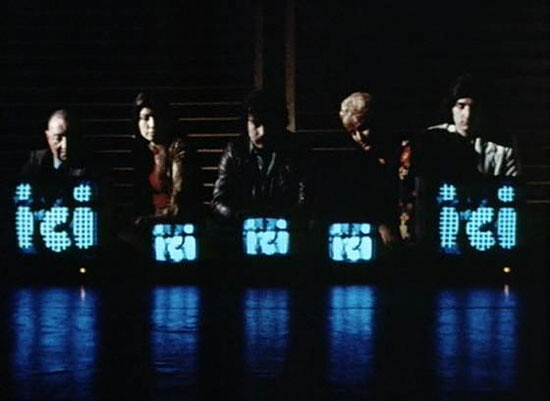
There is a scene in Here and Elsewhere that directly addresses matters of representativity. It takes place in the home of a working-class family, in a room where a young girl does her homework below a reproduction of Guernica that hangs from the wall. Off screen we hear her mother ask her father, “Did you find a job?” “No, I arrived too late,” he answers. The father goes into the room to greet the girl, who asks him, “Can you explain to me dad? I don’t understand.” He answers while walking out: “No, I don’t have time, we’ll see later.” The scene ends with the girl’s sigh of frustration. Guernica is the icon par excellence of intellectual militant struggles. Condemned by Sartre (in What is Literature? [1947]) and championed by Adorno (in Commitment [1962]), the image’s status as both an icon for militant struggles and a kitsch object, unlikely to be hanging in a working-class home, renders its presence in this scene ambiguous.32 Here Godard and Miéville allegorize the putting-out-of-work of political representation, aligning it with the crisis of patriarchy. The father can neither work nor help, like the union delegate or the intellectual. Explaining and helping to understand, which are tasks for intellectuals, militants, and fathers, are deferred or put out of work. In addition, Godard and Miéville amalgamate patriarchal responsibility and the revolutionary’s responsibility to mobilize at home (as opposed to going abroad). Instead of answering the call, revolutionary action gets postponed indefinitely: “I don’t have time, we’ll see later.” They critique through self-critique (which is the only means of problematization at this point) the intellectuals who went abroad and brought back materials to speak about the struggles of others without looking at what was happening at home, as Godard and Miéville lament having themselves done in the Middle East. The citation of Guernica and the (self-) indictment of “having spoken too loud” summon silence: Godard and Miéville call for silencing leftist ideology in the face of the failure of the Palestinian revolution, which embodies the failure of all revolutions. They are speechless.
When Godard declares in the voiceover that “we turned the volume up too high,” he is positioning himself in relation to Sartre’s concept of commitment. As we saw in Part I of this essay, Godard criticized Sartre for being unable to bridge his double position as writer and as intellectual. Godard himself sought to bridge this gap between art production and engaged activism in his practice of “militant filmmaking.” By citing Guernica and stating that “we turned the volume up too high,” Godard and Miéville contest Sartre’s skepticism about the power of images as a medium for the denunciation of injustice—a skepticism exemplified by Sartre’s dismissal of Guernica. For Sartre, insofar as images are mute, they are open receptacles of meaning and therefore invite ambiguous readings, as opposed to conveying a clear, unified message, like writing. Sartre claims that only literature can be successful as committed art because the writer guides his audience through a description, making them see the symbols of injustice and thereby provoking their indignation.33 Opposing Sartre, Godard and Miéville invoke Guernica’s quiet, visual scream, making a plea in favor of a flight from the prison of language, from logocracy.34
The fact that Guernica is not a speech act is perhaps the reason why it became the epitome of an autonomous yet committed work of art. While it remains separate from the public sphere (the domain of opinion and speech), it lets the German culpability surface, and, at the same time, it does not have as its end Picasso’s declaration of indignation.35 While we can, with Sartre, doubt whether Guernicaconverted anyone to the Spanish cause, this painting, like much of Godard’s work (a later example is his 1982 film Passion), posits a reflexive and analogicalrelationship between aesthetics and politics, as opposed to a transitive link. Transitivity is the effect of an action on an object, or the application of something to an object: here the application of politics to art, or vice versa. By contrast, an analogical relationship between art and politics implies a linking via aesthetics and ethics: if aesthetics is to ethics what art is to politics, it means that each term necessarily acts individually. A reflexive or analogical link between aesthetics and politics implies a relationship that acknowledges the presence of the other: they are separate, but aware of each other. Such a link presupposes film’s autonomy as relying on its having an end, which is different from being an end, or being instrumental to a cause: art appeals to viewers, calling for judgment or consideration.36
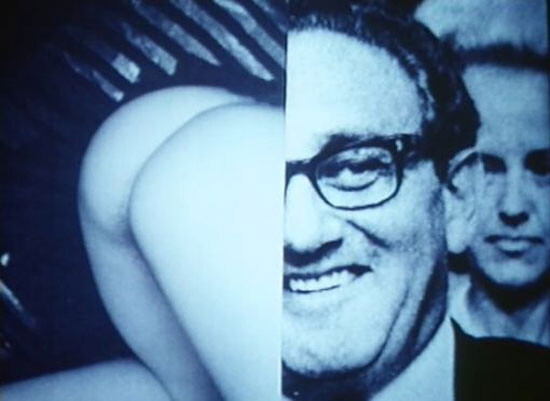
As we have seen, Maoists, breaking from the model of the Leninist vanguard intellectual, labored in factories alongside workers, all the while imbued with a Christian sacrificial rhetoric that claimed to serve the people, rejecting what they considered the exteriority of discourse in favor of the interiority of practice, and believing in the workers’ creative potential. Maoist struggles, however, were rendered obsolete by the self-managerial breakthrough at LIP, a watch factory in Besançon. In a 1973 interview with Maoists Philippe Gavin and Pierre Victor (the latter was Bernard-Henri Lévy’s pseudonym), Sartre discusses the LIP strike at length in relation to how it evinced the limits of Maoist revolutionary practice. Posing again the question “Who speaks?,” but now in humanist terms, Sartre, Gavin, and Victor sketch out the figure of the “New Political Man,” a synthesis of Maoist activist, intellectual, and politician. The New Political Man’s tools would be critical awareness, persuasion, and a renunciation of the superstructure. He would disseminate information in the public domain while remaining aware of the danger of becoming a “mediatic vedette.”37 A parallel figure—or perhaps an extension of the New Political Man—was the journalist: an intellectual who injected pressing debates into the public domain. After the dissolution of the Proletarian Left in 1973, it became necessary for the Maoists to reconceptualize engaged practice in order to further the politics of direct democracy. They publicly rejected their earlier Maoist activism, a gesture that went hand in hand with their critique of anti-totalitarianism. A new project, supported by Sartre and Foucault, was the founding of the daily newspaper Libération in the spring of 1973. Maoists demonstrated that they were increasingly media-savvy by producing a number of spectacular symbolic events covered by the media—therein the genealogy of “tactical media.” Not surprisingly, they rearticulated the practice of revolutionary journalism in terms of a collective “public writer.”38 One of the key themes of the May ’68 utopia was a society completely transparent to itself; this transparency was supposed to be achieved by the direct exchange of free speech without mediation, a theme that was then realized in Libération’s redefinition of mediation. The newspaper sought to democratically let all sides in a given conflict speak. Serge July defined the mission of the newspaper as the struggle for information under the direct and public control of the population, continuing the Maoist task of helping people to “capture speech,” as in their slogan “Peuple prend la parole et garde-la.”39 Libération’s impulse to democratize and to subvert content, to restore the “transparency of the code” by giving control of the information process to the people, was an attempt to reverse the circuit of information by initiating debate, as well as an attempt to realize the classic position of the Left regarding the democratic potential of the mass media. Influenced by the mass media theories of Benjamin, Brecht, and Enzensberger, their argument was that capital had hijacked the means of communication to promote and realize ideology. In this account, the media is posited as intransitive because it produces non-communication. In other words, communication through the media is unilateral.40 Ideally, the democratic potential of the media could be realized by breaking through this intransitivity and revolutionizing the apparatus and its content.41
As discussed above, for Godard and Miéville the leftist voice incarnated in Maoist activism did not go far enough in its contestation of intellectuals’ vanguardist position as the producers of common sense for the proletariat. Thus, in Here and Elsewhere they posed the new problem of the propagation of leftist doxa by the becoming-information of leftist discourse. Miéville and Godard would agree with Baudrillard’s critique of a leftist utopian view of the media, which held that unlimited democratic exchange is possible through communication. Such a position overlooks the fact that in essence, the media is speech without response. Even if efforts are geared toward the problem of the idle, passive reader-consumer whose freedom is reduced (like the viewer of political films) to the acceptance or rejection of content, such efforts are fruitless. Mediatization entails the coding of information into “objective” messages which are transmitted from a distance and which, because of the very nature of the apparatus, never get feedback. As Baudrillard put it, with the media “speech is expiring.” Baudrillard compares the media to voting, referendums, and polls. For him, all three share the logic of providing a coded state of affairs with which we must either agree or disagree, without having any agency over the content.42 Godard and Miéville sought to break away from the dichotomies of producer/consumer, transmitter-broadcaster/receiver, addressing them as a matter of the transformation of knowledge and communication into information (or codes), as a problem of cinematic voice and address.
Here and Elsewhere is, therefore, a film about utterances and visibilities gliding into one another in relation to cinematic voice, speech, discourse, expression, and their becoming-information, challenging the dominant forms of the shared sensible. Throughout the film, we see a multitude of open, speaking mouths: those of politicians, militants, and average people. We hear an array of sounds, speeches, and discourses: revolutionary songs and the sounds of war and the voices of the fedayeen, all from different discursive sites. Pointing out the discrepancies and the heterogeneous quality of the relationships between visibilities and utterances, Godard emphasizes the act of seeing, giving primacy to vision over discourse and speech; montage becomes the site of enunciation, shifting the problem from representation to matters of visibility, the visible, and the imageable. As he puts it in the voiceover: “Any everyday image is part of a vague and complicated system where the world comes in and out at each instant.”43
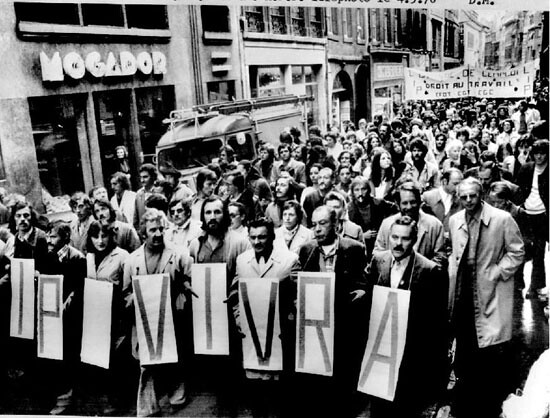
Through montage Godard makes images appear (comparaître) before the viewer, “giving to see” (donner à voir) as opposed to rendering or making visible. Here and Elsewhere presents a mélange of images: those filmed by Godard and Gorin in the Middle East, images filmed in Sonimage’s studio in Grenoble, images from journals and newscasts, and appropriated “historical” images and cartoons. The images appear in different formats or dispositifs: in television monitors, in filmed photographs, in video collages, in film footage, in slides, and in newspapers. Thus, the film is an accumulative disjunction of regimes of visibilities and discursivities embedded in their diverse material supports and channels of circulation. The regimes of visibilities can be divided into categories (slogan-images and trademark-images), genres (documentary, photojournalistic, pedagogic, epic), series (revolutionary additions, libidinal politics), and media (televisual screen, photography, and cinema). Sounds and sound-images are brought together through montage using the word “and” as the glue. For Godard, having been influenced by Walter Benjamin and André Breton, the actualization of an image is only possible through the conjunction of two others: “Film is not one image after another, it is an image PLUS another image forming a third—the third being formed by the viewer at the moment of viewing the film.”44 In Here and Elsewhere the conjunction/disjunction of the French working-class family and the fedayeen (who have the history of all revolutions in common) creates a fissure in the signifying chain of association in the film. The interstice between the “states of affairs” of the two (socio-historical) figures allows resemblances to be ranked, and a difference of potential is established between the two, producing a third.45 Such difference of potential is lodged in the syncategoreme “and.” The “and” is literally in between images, it is the re-creation of the interstice, bringing together the socio-historical figures along with the film’s diverse materials of expression in a relation without a relationship. Godard differentiates images by de-chaining them from their commonsensical chains of signification and re-chaining (or recoding) them in such a way that their signifiers become heterogeneous. Such heterogeneity resists the formation of a visual discourse resonant with the commonsensical image of the Palestinian revolution found in photojournalistic and documentary images visible in the French mass media. Through appropriation and repetition, Godard produces a sort of mnemotechnics that allows us to memorize the images and thus link their signifiers in diverse contexts: the operations of disjunctive repetition and appropriation pull out what the signifiers lack or push out their excess. This assemblage of images and sound-images from diverse regimes of visibilities and discursivities, linked through the word “and,” creates additional images, providing a multiplicity of points of view. Such an assemblage destroys the identities of images, insofar as “and” substitutes and takes over the ontological attribution of those images: their “this is,” the eidos of images (their being-with, or Être-ET).46
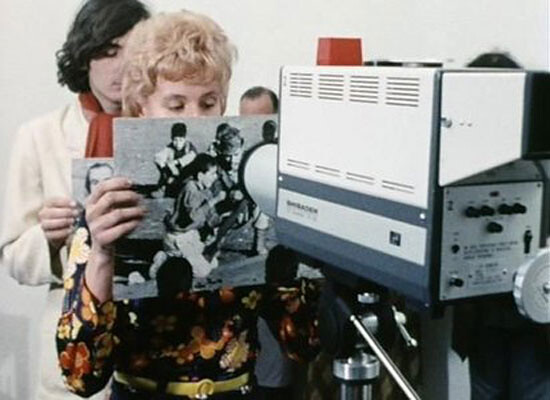
Privileging the act of seeing that underscores the distinction between speech and discourse in Here and Elsewhere, Godard and Miéville speak in the first person in the voiceover, calling for an ethics of enunciation that accounts for the intransitivity of mass media and undermines the code of objectivity proper to the media.47 For Godard and Miéville, “objectivity” requires that images hide their own silence, a “silence that is deadly because it impedes the image from coming out alive.” They thus work with the imperative to ask of images: “Who speaks?” And for them, all images are always addressed to a third: “Une image c’est un regard sur un autre regard présenté à un troisième regard.”48 Thus, images must be understood as immanent to an interlocutionary act, especially documentary and photojournalistic images, which, obliterating the mechanism of mediation, put forth objectivity as a discursive regime in which either “no one speaks,” “it speaks,” or “someone said.” The ethico-political imperative becomes, therefore, to take enunciative responsibility, to speak images and acknowledge authorship over them, to make images speak and to restore the speech that has been taken away from them, accounting for the intentionality immanent to the act of speaking for and of others as an act of expression emphasizing direct address—absolutely foreign to confession or situated knowledge, in the manner of écriture.49 By means of direct address, the subject of speech in Here and Elsewhere is located at the juncture of diffusing, receiving, emitting, and resending images and reflecting upon them. Godard and Miéville thereby become immanent to the videographic apparatus, speaking from an inter-media discursive site constituted by video passing in between television, cinema, photography, and print media.
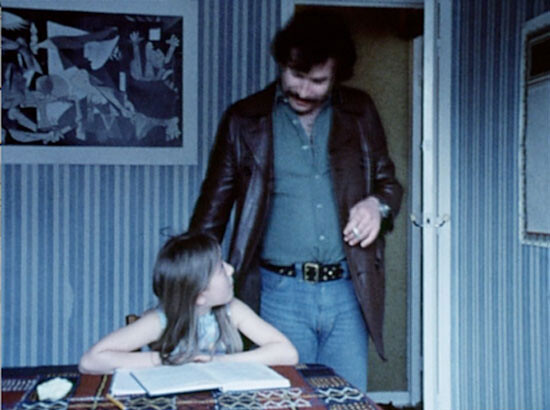
Godard’s war of position between 1967 and 1974 can be summarized as the production of contradictory images and sounds that call viewers to produce meaning with the films, as opposed to consuming meaning. We can name it a politics of address, a “the(rr)orising” pedagogy, or Brechtian didacticism. Godard’s collaborations with Gorin and Miéville create dissensus while calling for a radical way of hearing and seeing. In their work, the task of art is to separate and transform the continuum of image and sound meaning into a series of fragments, postcards, and lessons, outlining a tension between visuality and discourse. Evidently, for Sonimage the stakes in asking the question “Who speaks, for whom, and how?” had migrated from the realm of cinema into television and the communications media. This is due not only to the mediatization of intellectual mediation sketched out above, but most importantly, because of the ethical and political problems raised by the Palestinian footage in relation to militant engagement with Third World revolutionary movements and the pervasiveness of images of such movements in the media. For Godard and Miéville, it became pressing to articulate a regime of enunciation that would continue DVG’s critique of auteur theory in film, while addressing in a pedagogical manner the discursive regime of mediatic information and the problem of the expiration of speech.
Notes
Godard’s practice of this period has been equated to terrorism by Serge Daney and condemned as nihilistic and iconoclastic by Colin MacCabe. See Serge Daney’s “Le thérrorisé (Pédagogie godardienne),”Cahiers du Cinéma nos. 262–263 (January 1976): 32–39, special issue on five essays about Numéro Deux by Godard; and Colin MacCabe,Godard: Images, Sounds, Politics (London: British Film Institute/Macllian, 1980). See also Raymond Bellour, L’entre-images Photo. Cinéma. Vidéo. (Paris: La Différence, 1990); and Peter Wollen, “Godard and Counter Cinema: Le Vent d’est” in Readings and Writings: Semiotic Counter-Strategies (London: Verso, 1982), 79–91.
What Is To Be Done?, printable edition produced by Chris Russell for the Marxist Internet Archive, 46. See →.
It must be noted, echoing David Caute, that in France the term “intellectual” designates a moral-political vocation that was affirmed during the critical climate of the Dreyfus affair, epitomized by Emile Zola’s famous letter “J’accuse.” According to the PCF’s definition, the notion of “intellectual” embraces writers, philosophers, scientists, scholars, artists, and people in the performing arts and liberal professions. In short, it designates society’s disseminators of ideas. See David Caute, Communism and the French Intellectuals, 1914–1960 (London: Andre Deutsch, 1964), 12.
André Breton, Manifestes du Surréalisme, édition complète (Paris: France Loisirs, 1962), 248.
See Michel Foucault’s preface to Deleuze and Guattari’s Anti-Oedipus, trans. Brian Massumi (Minneapolis: University of Minnesota Press, 1983), xiii.
Frederic Jameson, “Periodizing the Sixties,” Social Text 9/10 (Spring–Summer 1984): 182.
Walter Benjamin, “The Author as Producer,” New Left Review vol. 1, no. 62 (July–August 1970): 83–96. In an early version of this text, Benjamin cited the following quote from Trotsky but crossed it out before publication: “When enlightened pacifists undertake to abolish war by means of rationalist arguments, they are simply ridiculous. When the armed masses start to take up the arguments of Reason against War, however, this signifies the end of War.” (Trotsky, History of the Russian Revolution, Vol. 1, 362.) Trotsky advances two regimes of enunciation here: the speech of “enlightened” intellectuals, made up of “rationalist arguments” based on knowledge and theory; and the speech of the masses, based on Reason or causal explanations, that is, based on practice.
In linguistics, the suffix “-eme” indicates a structural unit of some kind in the lexicon, grammar, and phonology of languages. As Fredric Jameson has demonstrated, the leftist ideologemes mentioned here are part of a materialist theoretical practice that was derived from certain readings and practices of Marxism in the Sixties. See “Periodizing the Sixties,” 195–196.
André Breton, “Towards a Free Revolutionary Art,” trans. Dwight MacDonald, in Art in Theory, 1900–2000: An Anthology of Changing Ideas, 2nd edition, eds. Charles Harrison and Paul Wood (Malden, MA : Blackwell Publishers, 2003), 533. Originally published in Partisan Review vol. 4, no. 1 (Fall 1938): 49–53.
See Jean-Paul Sartre, Bernard Pingaud, and Dionys Mascolo, Du rôle de l’intellectuel dans le mouvement révolutionnaire (Paris: Le terrain vague, 1971); and Sartre’s three conferences held in Kyoto, Japan in 1965, published inSituations, VIII Autour de 68 (Paris: Gallimard, 1972).
La Cause du people along with J’accuse were journals directly linked to the Proletarian Left, a party supported by Sartre and other prominent intellectuals. It dissolved in 1973 due to internal conflicts.
Interview with Godard by Marlene Belilos, Michel Boujut, Jean-Claude Deschamps, and Pierre-Henri Zoller, first published inPolitique Hebdo, nos. 26–27 (April 1972); reprinted in Godard,Godard par Godard (Paris: Cahiers du Cinéma, 1998), 374.
In The Family Idiot (1974), his multi-volume work on Flaubert, Sartre combines existentialism and social critique to explore the situation of Flaubert in 1840, when the young writer wrestled with the opposing legacies of the Enlightenment and Romanticism: truth versus beauty, communication and the enlightening of others versus literature. Sartre studied Flaubert as part of his attempt to resolve the contradictions between bourgeois ideology and literature, searching for a classless writing, that is, writing as a matter of “se déclasser,” or expelling oneself from the bourgeois class. For Sartre, in Flaubert and in his own intellectual and political practice the autonomy of art is a matter of how a writer’s work should be understood in relation to his life and to the historical forces and social conditions that shape a writer’s life. See Sartre, The Family Idiot: Gustave Flaubert, 1821–1857, vol. 5 (Chicago: The University Press, 1993); and Graham Good and T.H. Adamowski, “Sartre’s Flaubert, Flaubert’s Sartre,” review of Sartre,L’Idiot de la famille, vol. 3, in NOVEL: A Forum on Fictionvol. 7, no. 2 (Winter 1974), 175–186.
Sartre’s position is similar to Barthes’s position on the “author function.” This is a conception of authorship based on depersonalization in favor of subjectivity in writing, implying that there is an intransitive relationship between reality and fiction. Thus, the writer function implies a subject separate from the real subject that becomes manifest in the here and now of the reader encountering the text.
What is Literature?, trans. Bernard Frechtam (New York: Harper Colophon Books, 1965), 5. First published in France in 1947.
See Pierre Bourdieu, “Sartre, l’invention de l’intellectuel total,”Libération, March 31, 1983.
Movement for the National Liberation of Palestine, founded in the 1960s by Yasser Arafat.
Quote from Manifeste: “En literature et en art, lutter sur deux fronts. Le front politique et le front artistique, c’est l’étape actuelle, et il faut apprendre a résoudre les contradictions entre ces deux fronts.” Reprinted in Jean-Luc Godard Documents, ed. Nicole Brenez et. al. (Paris: Centre Pompidou, 2006), 138.
Many famous intellectuals were associated with the Maoists, who referred to these intellectuals as fellow travelers or “democrats.” Among them were Sartre (who lent his name to the directorship of La Cause du peuple), Simone de Beauvoir, Marin Karmitz, Katia Kaupp, Mariella Righini, Alexandre Astruc, Agnes Varda, and Gérard Fromanger, among others. See Christophe Bourseiller, Les Maoïstes: La folle histoire des gardes rouges français (Paris: Plon, 1996), 198.
For an account of Godard’s involvement with the French leftist press during his DVG period, see Michael Witt, “Godard dans la presse d’extrême gauche” in Jean-Luc Godard Documents, 165–177.
Jean-Pierre Gorin and Godard met in 1966 while Godard was filming La Chinoise, at a time when Gorin was associated with the Marxist-Leninist movement Union de Jeunes Communistes Marxistes-Leninistes (UJCm-l) at the École Normale Supérieure. It is said that after the events of May ’68, Godard sought to work with someone who was not a filmmaker. Legend has it that he and Gorin met again while attending a meeting of the États Généraux de Cinéma, a collective of militant French filmmakers founded during the events of ‘68. (For more information on the États Généraux assembly, see Cahiers du Cinéma [September 1968
Interview with Godard by Marlene Belilos, Michel Boujut, Jean-Claude Deschamps, and Pierre-Henri Zoller, ibid.
Cinéthique 5 (September–October 1969): 14.
See the original manuscript of “Quoi Faire?,” reproduced in Jean-Luc Godard Documents, 145–151.
For an extremely detailed account of the “political lines” followed by DVG in Pravda, Le Vent d’est and Lotte in Italia, see Gérard Le Blanc, “Sur trois films du Dziga Vertov Group,” VH 101 6 (September 1972). According to Le Blanc, the main political line that shaped DVG’s overall practice was theoricism, characterized by abstract analyses of real contradictions in social formations. Furthermore, each individual film was dominated by an additional political line. Pravda was dominated by “dogmatic spontaneism,” a political line followed by students who had quit the PCML-F (Partie Communiste Marxiste-Léniniste Français), objecting to its revisionism. Le Vent d’est was dominated by “right wing opportunism,” a line followed by those who tried to maintain “the organizations” (the UJC-ml) that attempted to take over the student movement in May ’68. Lotte in Italia was dominated by “leftist opportunism,” or the first line of the Proletarian Left.
For detailed descriptions of DVG’s films see Peter Wollen, “Godard and counter cinema: Vent d’est” and Julia Lesage, “Tout va bien and Coup pour Coup: Radical French Cinema in Context,”Cineaste vol. 5, no. 3 (Summer 1972); David Faroult, “Never More Godard,” ibid.; James Roy MacBean, Film and Revolution(Bloomington: Indiana University Pres, 1975); and Gérard Le Blanc and David Faroult, Mai 68 ou le cinéma en suspense (Paris: Syllepse, 1998).
See Mao Tse-Tung, “On Practice: On the Relation between Knowledge and Practice, between Knowing and Doing,” and “On Contradiction” in On Practice and Contradiction (London: Verso, 2007), 52–102; also available at →.
For an analysis of Here and Elsewhere as it relates to the movement of Third Worldism and Godard’s engagement with Palestine, see Irmgard Emmelhainz, “From Third Worldism to Empire: Jean-Luc Godard and the Palestine Question,” Third Text 100 (September 2009), 100th Anniversary Special.
See Serge Daney, “Le thérrorisé (Pédagogie godardienne),” Cahiers du Cinéma nos. 262–263 (January 1976): 32–39; and Raymond Bellour, L’entre-images Photo. Cinéma. Vidéo. (Paris: La Différence, 1990).
“On a fait comme pas mal de gens. On a pris des images et on a mis le son trop fort. Avec n’importe quelle image: Vietnam. Toujours le même son, toujours trop fort, Prague, Montevideo, mai soixante-huit en France, Italie, révolution culturelle Chinoise, grèves en Pologne, torture en Espagne, Ireland, Portugal, Chili, Palestine, le son tellement fort qu’il a fini par noyer la voix qu’il a voulu faire sortir de l’image.” Ici et ailleurs (Here and Elsewhere), 55 min, Chicago: Facets Video, 1995. Emphasis mine.
Jean-Pierre Le Goff, Mai 68, L’Héritage impossible (Paris: La Découverte, 1998), 201.
Adorno’s Commitment was originally published in 1962 as both a radio address and a journal article. In 1968 a number of US protests against the war in Vietnam used Guernica as a peace symbol. A year earlier, some 400 artists and writers petitioned Picasso: “Please let the spirit of your painting be reasserted and its message once again felt, by withdrawing your painting from the United States for the duration of the war.” In 1974, Toni Shafrazi spray-painted the words “Kill Lies All” on Picasso’s iconic painting. See Picasso’s Guernica, ed. Ellen C. Oppler (New York and London: Syracuse University Press, 1988). The symbolic power of Guernica was further highlighted in January 2003 when a reproduction of the painting in the UN headquarters was covered during Colin Powell’s presentation of the case for invading Iraq to the Security Council. This blocked the production of images (by the press) of the Security Council with the reproduction in the background.
Jean-Paul Sartre, What is Literature?, trans. Bernard Frechtam (New York: Harper Colophon Books, 1965), 4. First published in France in 1947.
See Walter Benjamin, “The Author as Producer,” New Left Review vol. 1, no. 62 (July–August 1970) 84-85. For Jacques Derrida, Guernica’s denunciation of civilized barbarism occurs in a dead silence that allows one to hear the cry of moaning or accusation. This cry joins the screams of the children and the din of the bomber. See Derrida, “Racism’s Last Word,” Critical Inquiry 12 (Fall 1985), 290-301.
See Adorno, “Commitment,” in Notes to Literature, Volume Two, ed. Rolf Tiedemann, trans. Shierry Weber-Nicholsen (New York: Columbia University Press, 1992), 76-94.
This is Adorno and Pierre Macherey’s position regarding the relationship between aesthetics and politics. For Macherey, art has an end insofar it presupposes a subjective pact between viewer and author based on general trust: the author’s word is to be believed, the receiver’s is an act of faith. Before the work appears, there is an abstract space presupposing the possibility of the reception of the author’s word. See Pierre Macherey, Pour une théorie de la production littéraire (Paris: François Maspero, 1966), 89-91. Thierry de Duve posits the problem of art as an end via Kant’s aesthetic judgment, arguing that “the notion of artists speaking on behalf of us is essential to art as art, and its legitimacy does not hinge on the artist’s purportedly universal mandate but rather on the artwork’s universal address.” (My emphasis) See Thierry de Duve, “Do Artists Speak on Behalf of All of Us?,” in Voici -100 d’art contemporain (Brussels: Museum of Fine Arts, 2001).
Jean-Paul Sartre et al., On a raison de se révolter (Paris: Gallimard, 1974), 288-340.
Kristin Ross, May ’68 and its Afterlives, (Chicago and London: The University of Chicago Press, 2002), 114-116.
“People seize speech and keep it.”
See Jean Baudrillard, “Requiem for the Media” (1972), New Media Reader, ed. Noah Wardrip-Fruin and Nick Montfort (Cambridge, Mass.: MIT Press, 2003), 280.
See Brecht’s “The Radio as an Apparatus for Communication” (1932); Walter Benjamin’s “The Author as Producer”; Hans Magnus Enzensberger’s “Constituents of the Theory of the Media,” in The Consciousness Industry (New York: Seabury Press, 1974), 95-128; and Baudrillard’s critique of this position in “Requiem for the Media,” ibid.
Baudrillard, ibid.
“N’importe quelle image quotidienne fait partie d’un système vague et compliqué, où le monde entier entre et sort à chaque instant.”
“Le cinéma ce n’est pas une image après l’autre, c’est une image plus une autre qui en forment une troisième, la troisieme étant du reste formée par le spectateur au moment où il voit le film.” Godard in “Propos Rompus,” Jean-Luc Godard par Jean-Luc Godard (Paris: L’Étoile et Cahiers du cinéma, 1985), 460.
See Gilles Deleuze, Cinema II: The Time-Image, trans. Hugh Tomlinson and Robert Galeta (Minneapolis: The University of Minnesota Press, 2001), 180.
Gilles Deleuze, “Trois questions sur Six fois deux: A propos de Sur et sous la communication,” Cahiers du Cinéma 271 (November 1976).
Here I am taking after the linguist Oswald Ducrot who argues that the talking subject introduces sentences (in enunciation) that necessarily contain the responsibility of the utterer; in other words, in enunciation the speaker is committed to the semantic content. That is why for Ducrot, speech acts constitute expression. See Oswald Ducrot, Logique, structure, énonciation: Lecture sur le langage (Paris: Minuit, 1989); and Les mots du discours (Paris: Minuit, 1980).
From the voiceover in Here and Elsewhere.
According to Jacques Derrida, in the domain of écriture there is a movement in language at its origin, which conceals and erases itself in its own production. This means that in écriture the signified always already functions as a signifier. With écriture, Derrida undermines the Aristotelian idea of theLogos as the mediation of mental experience along with the movement of “exteriorization” of the mental experience as a sign of presence. The function ofécriture is, therefore, to conceptualize the dissolution of the signifier in the voice by splitting signified and voice: in écriture, the subject of a text is coherent with the text, becoming the object of écriture, displacing the signified from the author. See Derrida’s Of Grammatology, corrected edition, trans. Gayatri Chakravorty Spivak, (Baltimore and London: The Johns Hopkins University Press, 1997).

